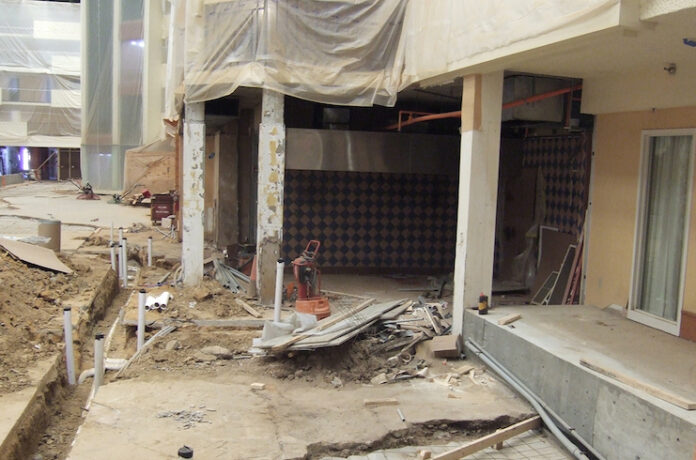
Since leading a renovation at The Adolphus Hotel Dallas back in 1979, CMCA Design has conducted a wide variety of hotel renovations, and the team has become versed in many best practices for these projects. “The Adolphus project was a ‘gut’ renovation where the hotel closed for a period, but usually when we do renovations, the hotel stays in operation, which creates its own set of challenges,” explained Managing Principal Jill Cole. The first step, she said, is to determine the extent of the renovation—the number of rooms and floors where construction will be taking place—and the potential disturbances to guests. For example, a floor of guestrooms may need to be put out of commission just due to noise, or a public elevator taken out of service for use by construction workers. Onsite management needs to “do a very good job of communicating all this to guests,” she stressed. Beyond these logistical measures, Cole shared advice to ensure the design process meets the needs and expectations of all stakeholders.
1Involve the design team early.
“It’s never too early to get your design team on board,” Cole advised. The team can discover elements of the project that can take longer than expected, and it’s important to make those timeline determinations early in the process. “I’ve very often found that owners have an unrealistic idea of how quickly new materials can be brought onsite, how quickly they can get new furniture and furnishings, for example,” she said.
2Get owner input.
The owner should be involved in final design as well as procurement decisions, as differences in product quality, price, and delivery times can require their assessment. Cole gives an example of such a circumstance: “You may have one qualified vendor that says it’s going to take us 16 weeks to deliver, and another may say 12, but their price is 10 percent higher. Then you want to ask the owner, ‘What’s more important—cost savings or time savings? How do we handle this?’ And the owner may reply, ‘Well, we’re getting into our busiest season, and we need to finish the project as soon as possible,’ for instance.”
3Allot time for brand executives to review.
“Most of the brands say they need a certain period to review the proposed renovation, and it’s part of the schedule to allow time to submit all the documentation and design to the brand before you start placing orders,” Cole said, adding that brand representatives tend to be busy people. “Typically, they will ask for 10 working days after submission.” Brand representatives look for a certain level of quality, features they feel align with the brand, and often, an expression of the hotel’s locale in the redesign, she noted.
4Create a quality representation of the new design.
The design team should present a visual representation of the project (e.g., a redesigned guestroom) to the owner and contractor for review. “You don’t want them to start construction and have the owner walk into the area and say, ‘I didn’t know it was going to look like this.’ That’s a bad day,” Cole said. At minimum, the representation should be a realistic rendering, but if the project is large enough, building a model room is preferable. “It lets everybody, from the owner to the contractor to the housekeeping department, see exactly what they’re going to get and have an opportunity to ‘kick the tires’ and raise any issues they might see.” Building a model room is expensive and generally takes at least three months but can be well worth the cost.
5Hold weekly team calls.
Cole recommended having calls with the team at least once a week to overview the progress of the renovation and discuss any challenges that have arisen. Depending on the project, key participants can include the owner’s representative, asset manager, general contractor, purchasing agent, architect, and interior designer.











